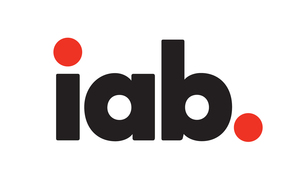NEW YORK, March 11, 2021 /PRNewswire/ -- With the looming loss of third-party cookies and identifiers, the entire digital advertising ecosystem should be bracing for impact and preparing to adjust to entirely new ways of targeting, measuring, and attributing media effectiveness to ad campaigns. However, according to IAB's 2021 State of Data research, released at the IAB Annual Leadership Meeting (ALM), there is a false sense of readiness among some data leaders, which could result in business failures in 2022.
"Sound the alarm bell. Brace for impact," said Orchid Richardson, Senior Vice President, Programmatic+Data Center, IAB. "IAB State of Data reveals that the majority of the digital media ecosystem believes they're ready for what's next. Many are wrong, with no solutions to the most pressing challenges their businesses will face when third-party identifiers go away."
Assessing Perceived vs. Actual Preparedness for the Post Third-Party Cookie and Identifier Tracking Ecosystem (Quantitative Study, Ipsos)
According to the IAB-commissioned Ipsos survey of more than 200 data decision-makers within brands, publishers, ad tech, agencies, and data companies, 67% of respondents report that they are prepared for the impending loss, yet 76% do not think their revenue will be impacted. Conversely, over 40% of the industry says they are concerned with limitations regarding targeting (45%) as well as with ad campaign measurement (41%).
"If digital marketing leaders do not think the loss of third-party cookies will have an impact on their revenue, operations, and products, then they will be in for a rude awakening," Richardson added. "This isn't just a technical issue. This a business issue that will have ramifications rippling throughout the entire organization."
A dangerous business-as-usual approach dominates. The industry continues to spend more on third-party audience data; such expenditures increased in 2020 by 3.3% to $12.3B.
The Demise of Third-Party Cookies and Identifiers: What it Means for Digital Advertising in the US (Qualitative Study, McKinsey)
As part of the State of Data initiative, McKinsey interviewed key data leaders from brands, publishers, agencies, and ad tech and data companies to better understand how companies will adapt and address the impending loss of third-party cookies and identifiers. The qualitative study found that advertisers, their agencies, and publishers will find nearly every aspect of their media execution impacted by the changes to the data ecosystem, from planning and media allocation to audience identification and targeting, to measurement and attribution.
The industry is undergoing massive innovation in how advertisers and publishers design their consumer experiences, one that essentially exchanges, with their consent, access to content for the ability to gather and use consumer information.
- The publishing industry will have to replace up to $10 billion in ad revenue with a combination of first-party data—gathered through a combination of paywalls and required registrations—and updated contextual targeting and probabilistic audience modeling.
- Advertisers will need to build new data strategies that rely on first-party data or cooperate with walled gardens.
"Change is never easy, but the opportunity that emerged from the one-on-one interviews with key industry leaders couldn't be clearer. First-party data is the answer. If you don't have it, get it," said Richardson.
Please visit iab.com/state-of-data for more information about the IAB's 2021 State of Data.
Methodology
Assessing Perceived vs. Actual Preparedness for the Post Third-Party Cookie and Identifier Tracking Ecosystem (Quantitative Study)
IAB partnered with Ipsos to develop an industry-focused quantitative exploration to assess the digital advertising ecosystem's preparedness for the loss of third-party cookies and identifiers. Specifically, the study looked to identify trends in data spending, areas of focus related to data and the concerns and obstacles that data leaders are facing this year. A 15-minute anonymous online survey was fielded by Ipsos between January 1st and January 19th, 2021. IAB partnered with mdrk Consulting to develop a multi-method statistical model to estimate the size of the third-party audience data and data activation solutions in the U.S. markets.
The Demise of Third-Party Cookies and Identifiers: What it Means for Digital Advertising in the US (Qualitative Study)
This work is the assimilation of in-depth interviews, conducted by McKinsey, with 28 senior decision-makers (at the vice president level or higher) who work with data at brands, publishers, agencies, and ad tech and data companies to get a sense of their approach to the industry's challenges. Each interview agenda covered: how the decision maker's organization currently uses audience data, how each organization was investing in audience data, what the decision-maker thought the key challenges were for digital marketers, the decision-maker's assessment of the industry's readiness for the loss of third-party cookies and identifiers, and the kinds of changes stakeholders should make. The interviews, each an hour long, were conducted in January and February of 2021 and provided interviewees an open format to speak in-depth about topics that were of particular interest to them. For instance, some executives at journalistic organizations pointed out the social value of journalism, which is not always reflected by publishers' ad revenue.
About IAB
The Interactive Advertising Bureau empowers the media and marketing industries to thrive in the digital economy. Its membership comprises more than 650 leading media companies, brands, and the technology firms responsible for selling, delivering, and optimizing digital ad marketing campaigns.The trade group fields critical research on interactive advertising, while also educating brands, agencies, and the wider business community on the importance of digital marketing. In affiliation with the IAB Tech Lab, IAB develops technical standards and solutions. IAB is committed to professional development and elevating the knowledge, skills, expertise, and diversity of the workforce across the industry. Through the work of its public policy office in Washington, D.C., the trade association advocates for its members and promotes the value of the interactive advertising industry to legislators and policymakers. Founded in 1996, IAB is headquartered in New York City.
SOURCE Interactive Advertising Bureau (IAB)

Related Links
WANT YOUR COMPANY'S NEWS FEATURED ON PRNEWSWIRE.COM?
Newsrooms &
Influencers
Digital Media
Outlets
Journalists
Opted In





Share this article